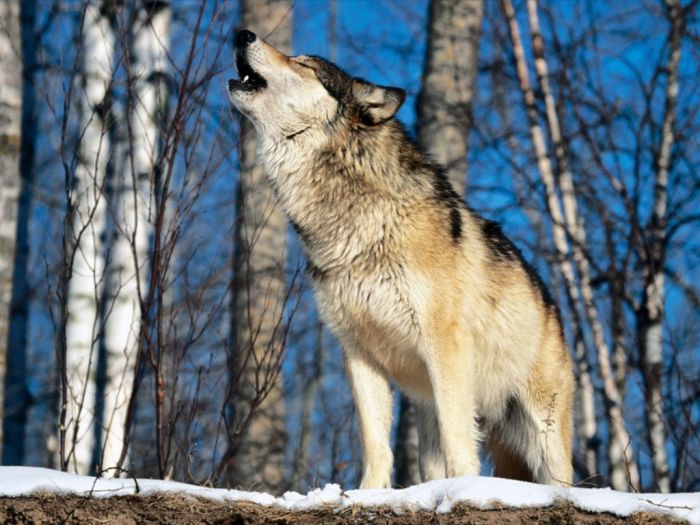|
|
Gray Wolf
|
Postural communication in wolves is composed of a variety of facial expressions, tail positions and piloerection. Aggressive or self assertive wolves are characterised by their slow and deliberate movements, high body posture and raised hackles, while submissive ones carry their bodies low, sleeken their fur and lower their ears and tail. When breeding males encounter subordinate family members, they may stare at them, standing erect and still with their tails horizontal to their spine. The pre-caudal scent glands may play a role in expressing aggression, as combative wolves will raise the base of their tails whilst drooping the tip, thus positioning the scent glands at the highest point.
Two forms of submissive behaviour are recognised: passive and active. Passive submission usually occurs as a reaction to the approach of a dominant animal, and consists of the submissive wolf lying partly on its back and allowing the dominant wolf to sniff its anogenital area. Active submission occurs often as a form of greeting, and involves the submissive wolf approaching another in a low posture, and licking the other wolf's face.
When wolves are together, they commonly endulge in behaviours such as nose pushing, jaw wrestling, cheek rubbing and facial licking. The mouthing of each other's muzzles is a friendly gesture, while clamping on the muzzle with bared teeth is a dominance display. Dominant wolves may assert themselves by straddling over a subordinate family member. At a kill, wolves will protect the carcass from afar from other wolves by flattening their ears outwardly, thus indicating that they are covering something belonging to them.
|
|









